
CONTENT
- 1 What are electric convectors for heating: differences from standard radiators and the principle of operation
- 2 Basic device of electric convectors
- 3 Priority technical characteristics of electric heating convectors with thermostats
- 4 Additional functionality in electronic convectors
- 5 In what cases is it more rational to use electric convectors
- 6 Installation and safety features when using electric wall convectors
- 7 What are the advantages and disadvantages of wall-mounted electric heating convectors with a thermostat?
- 8 The best manufacturers of electric convectors
- 9 Bonus! Which electric wall-mounted heating convector with thermostat is better to buy in 2019? TOP-5 + reviews
What are electric convectors for heating: differences from standard radiators and the principle of operation
Some customers, when they come to the store, begin to ask: "Do you have a wall-mounted electric heating radiator in stock?" Most often, such a person means a convector. Unfortunately, not knowing the differences and specifics of the equipment, there is a risk of taking a product that will not provide adequate heating of the room. So what are the differences?
A standard radiator heats up its surface and subsequently its "hot" body transfers heat to the entire space of the room.
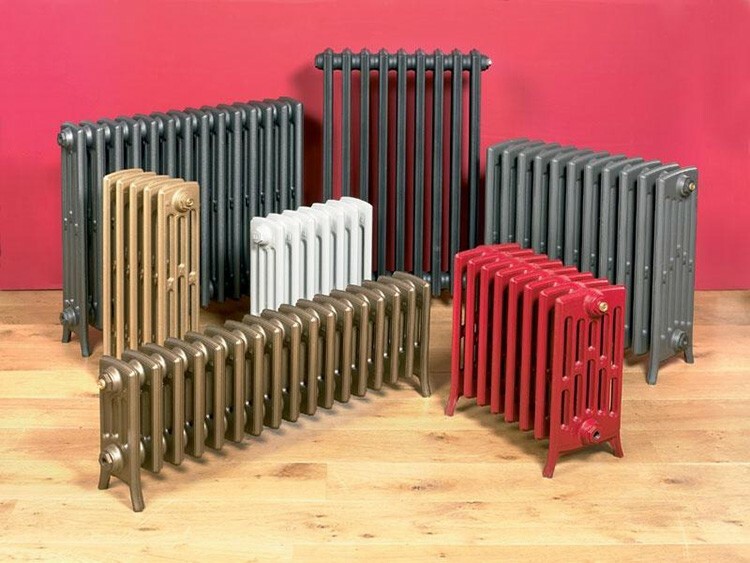
The convector, in turn, draws in cold air, heats it up and only then releases the hot air stream outside.
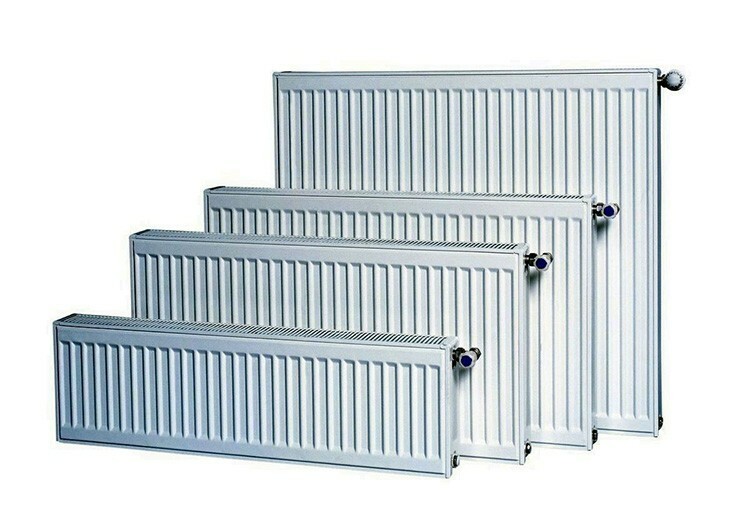
In the electrical modification, all processes and temperature control are carried out by electronic elements.
The principle of operation is surprisingly simple and understandable even for a child - cold air with a higher mass passes through the holes in the base of the convector. Inside, it is exposed to heat from the heating elements. The processed air gains less weight and, according to the laws of physics, begins to move upward through special slots.
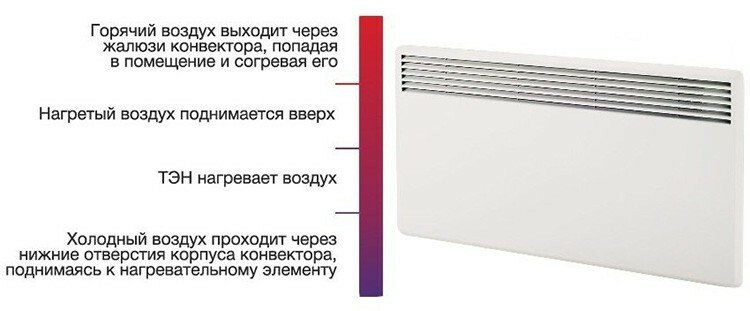
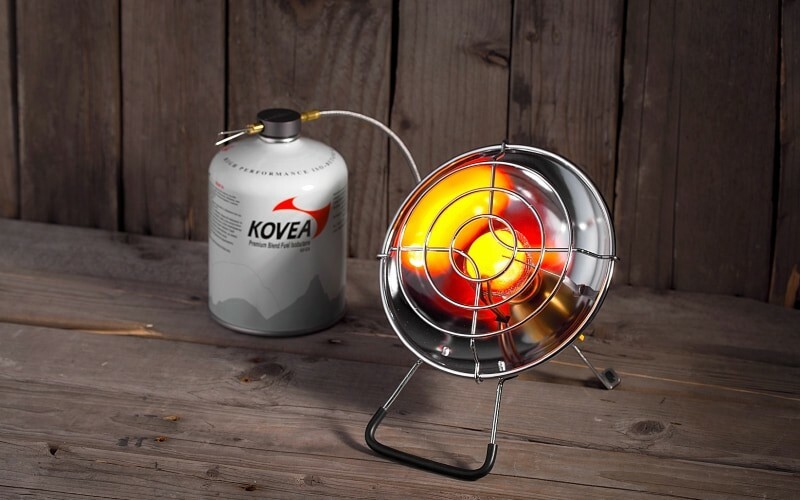 Mobile heat: gas heater for summer cottages with a cylinder.In a special publication of our portal, we will tell you in detail about gas heaters with a cylinder. You will learn about the main types of heaters, advantages and disadvantages, and check the prices.
Mobile heat: gas heater for summer cottages with a cylinder.In a special publication of our portal, we will tell you in detail about gas heaters with a cylinder. You will learn about the main types of heaters, advantages and disadvantages, and check the prices.
Basic device of electric convectors
The housing of the household heater under consideration in 99% of cases is made of various metal alloys. Technological holes can be seen in the lower and upper parts - they are necessary for the intake of cold and supply of heated air.
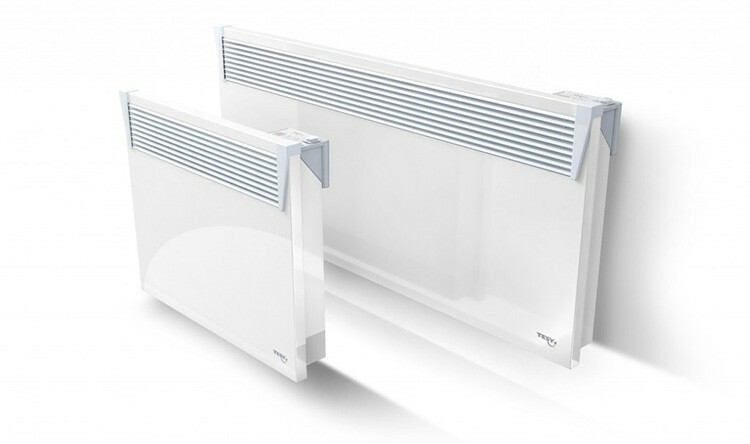
The most important "organs" are located inside - the heating element and the control unit (thermostat).
In modern heating devices, there are three options for heating elements:
- Tubular electric heater (TEN) - is presented in the form of a hollow tube, inside which is placed a spiral made of nichrome. Sometimes, for greater efficiency, the structure is equipped with special ribs. The advantages include the ability to use in high humidity. In this case, the element emits extraneous sounds during operation and has a low level of efficiency.
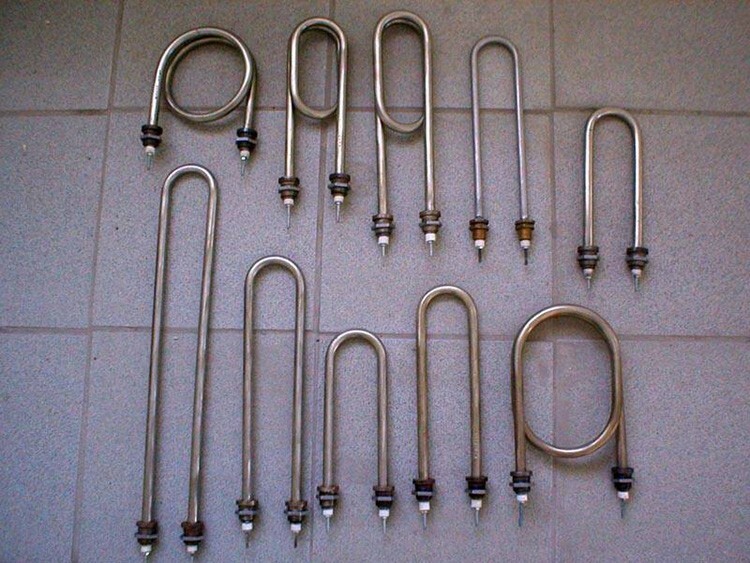
- Needle heater - is a rectangular case, to which wire components are connected in rows on both sides. Outwardly, their location is similar to the needles of conifers, hence the name. Despite the low cost and convenience in regulating the optimum temperature, such a heater is able to make the air unnecessarily dry, and is also unsuitable for damp rooms.

- Monolithic heater - in electric convectors with a thermostat, you can most often find this option. Their design assumes the presence of a ribbed body with a thread sealed into it from the previously mentioned nickel-chromium alloy. Despite the high cost, monolithic elements are devoid of the disadvantages of previous modifications.
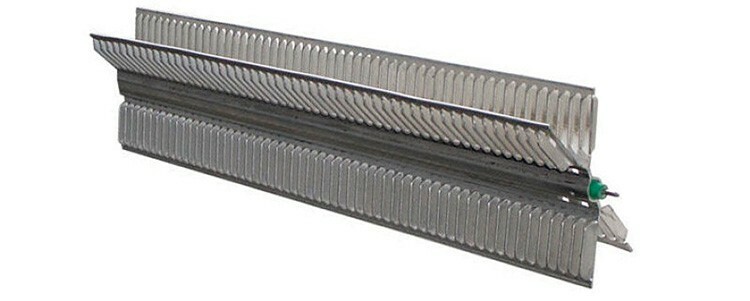
NOTE!
Recently, ceramic electric convectors are gaining more and more popularity. They use a heating element made of ceramic materials. This solution has a minimal impact on the environment, and also to a lesser extent contributes to "burning out" the air in the room.
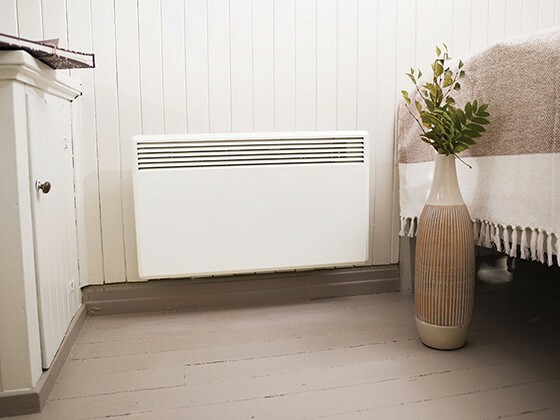
Thermostats (they are also thermostats) are used to control equipment and control the required temperature in the room. This is the "brain" of the entire product, without which maintaining a microclimate in an apartment or house would be simply impossible.
Domestic and foreign manufacturers of this equipment offer two options for control units:
- Mechanical thermostat - they are equipped with cheap models. Externally, it is presented in the form of rotary knobs, with which the owner sets the required power and temperature regime. When the heating element reaches the required mark, the thermostat stops operating the device. When it cools down completely, the control unit starts heating again. This modification saves the family budget, but at the same time requires careful self-control, since such a thermostat is unable to take into account the current temperature in the room.
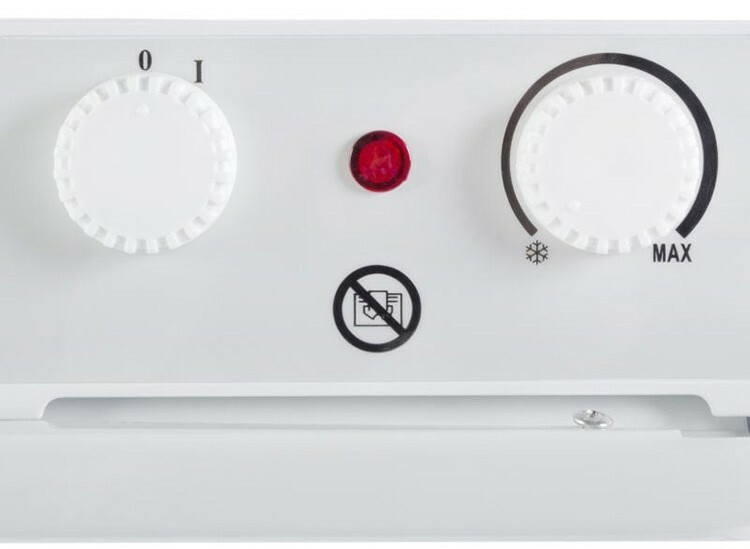
- Electronic control unit - unlike a competitor, an electric convector with a thermostat of this type is able to take into account both the heating of the equipment and the ambient temperature. The received data are processed by a special "hardware" and make adjustments to the operation of the convector. In addition to manual settings, the owner can purchase a model with a remote control, which increases the usability several times over. Also, such a thermostat can regulate heating with an accuracy of up to 0.10C.
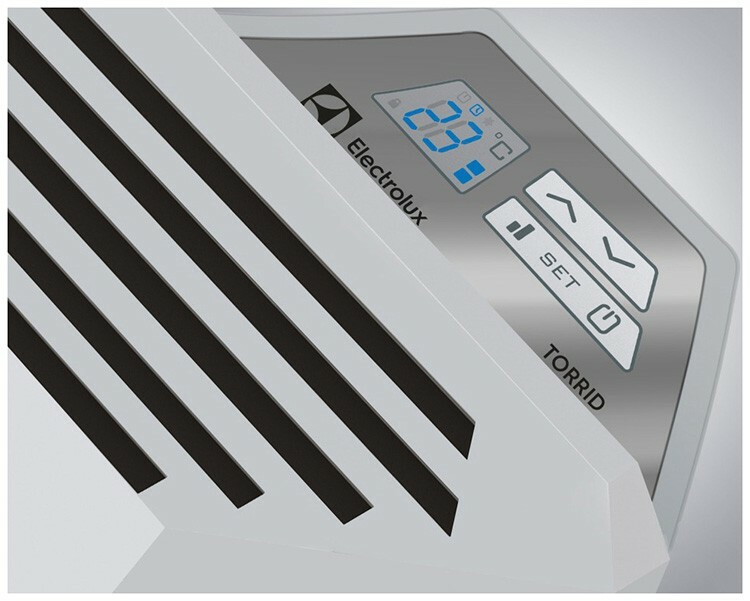
NOTE!
Some electronically controlled models have a schedule function. By correctly distributing the time for heating the room, you can not only save yourself a few minutes a day, but also reduce energy costs.
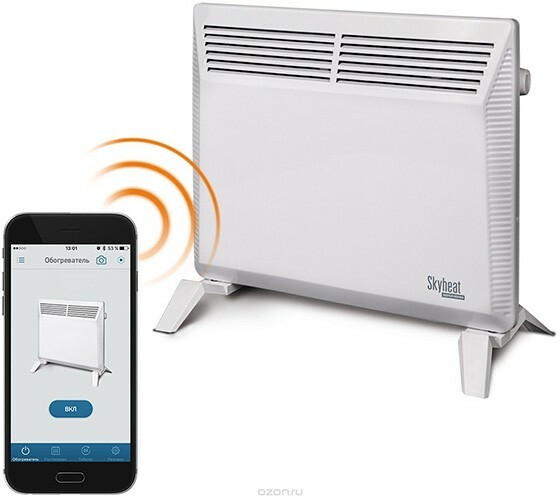
Priority technical characteristics of electric heating convectors with thermostats
Choosing the optimal model, first of all, we turn our attention to the basic technical parameters - they will determine the further efficiency of the device in a house or apartment.
Device power (heating area)
"Alpha and Omega" for any requirements of the buyer. Not taking this parameter into account is like buying a Porsche car just to transport vegetables from the garden. For a reasonable choice, you need to know the area or volume of the future heated room. Our editorial office invites you to familiarize yourself with the optimal power options collected in one table:
| Power, W | The area of the heated room (taking into account the calculated capacity), m2 | The volume of the heated room (taking into account the calculated capacity), m³ | ||||
| 15 W / m² | 25 W / m² | 35 W / m² | 15 W / m² | 25 W / m² | 35 W / m² | |
| 250 | 7 | 4 | 3 | 17 | 10 | 7 |
| 500 | 13 | 8 | 6 | 33 | 20 | 14 |
| 750 | 20 | 12 | 9 | 50 | 30 | 21 |
| 1 000 | 27 | 16 | 11 | 67 | 40 | 29 |
| 1 500 | 40 | 24 | 17 | 100 | 60 | 43 |
| 2 000 | 53 | 32 | 23 | 133 | 80 | 57 |

Installation option
This parameter depends on the future location of the device. Heating appliance manufacturers offer several installation options:
- Floor convector, - a convenient offer for those who do not like to spoil the interior design with foreign objects, as well as for wealthy segments of the population. After installation, the device is closed with a special grill and does not stand out from the objects in any way. This option is quite costly, and is also relevant only for overhaul of floors in the room.
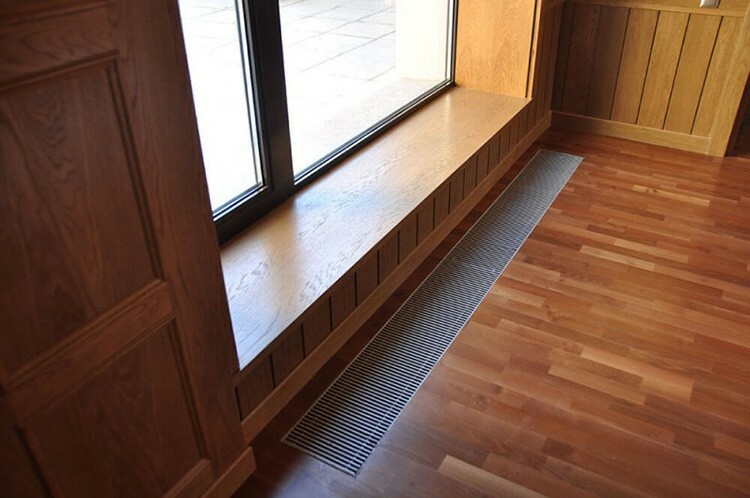
- Floor modification - a convenient option if you need to heat several different rooms. Has increased mobility due to four wheels at the base. Electric floor convectors also have one significant drawback - an increased risk of overturning (especially if the family has small children or moving pets).

- Wall modification - "The highlight of the program" and the best option of all the proposed. Placed on the wall, thereby saving space in the room. When installed under a window, it easily replaces a standard heating radiator. Electric wall-mounted heating convectors are very economical, they are even suitable for summer cottages or non-residential premises.
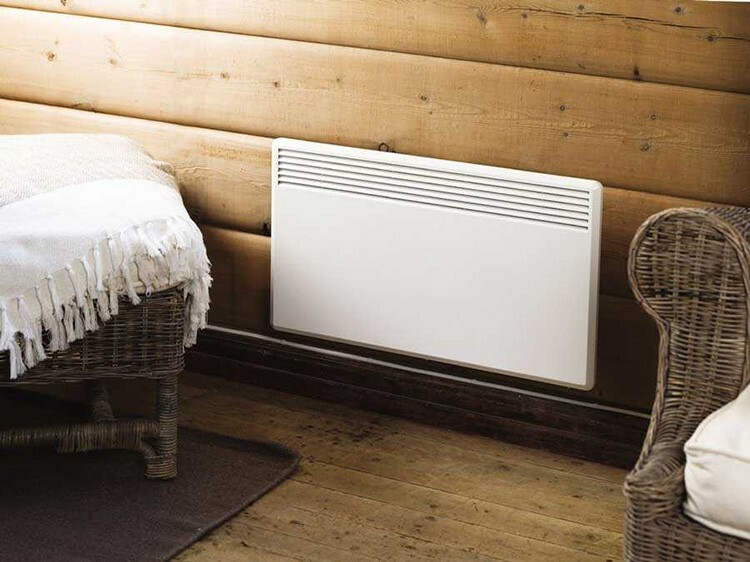
Equipment dimensions
This characteristic is closely related to the previous parameters. A compact heater is hardly suitable for a spacious room with a low constant temperature. It would be folly to buy a huge convector to heat a small room without the possibility of ventilation. Therefore, it is always necessary to measure the dimensions of the dwelling and heating equipment.
Control type
As we noted earlier, manufacturers install either a mechanical or an electronic control unit in their creations. By giving preference to the first option, you save a significant amount of money, but ease of use and economy will be reduced. The second type does not have such disadvantages, but requires large investments at the first stage.

Additional functionality in electronic convectors
Like any progressive technique, the hero of our review has a number of special options that can significantly simplify the setup procedure and not only. We offer a list of the most common additional functions:
- Non-standard operating modes - we all live in different natural and weather conditions, some need constant high temperatures, others prefer to use a convector only occasionally. Especially for such cases, pre-thought modes have been created (for example, "economical").
- Anti-freeze option - sometimes the air in the room reaches low, unsuitable for life temperature values. For such rooms, it is better to choose a device with an anti-freeze function. When lowering to a certain mark, such a device will turn on automatically.
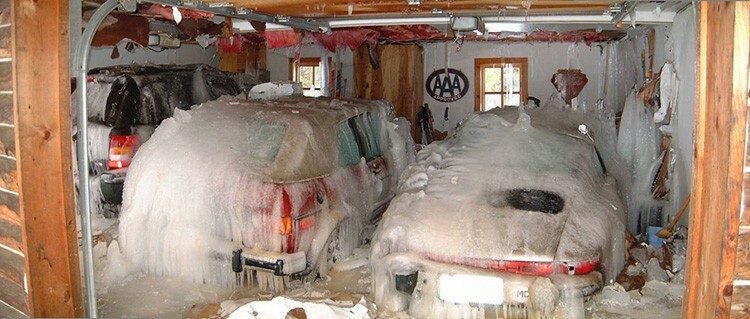
- Rollover sensor - in case of an unforeseen fall of the equipment, a special element is triggered to stop the operation of the convector. Will save you and your family from fire in any situation.
- Save settings function - when the owner sets certain values of the thermal regime, the device remembers these figures. When turned on again, there will be no need to rebuild the indicators.
- Built-in air ionizer - a very nice and useful component for ecology fans and additional overpayments for everyone else. This element is designed to add useful charged particles to the heated air masses, making it cleaner and healthier.

In what cases is it more rational to use electric convectors
In everyday practice, there are three basic situations when the use of such a device with thermoregulation will be justified.
Non-living room
If you have a summer cottage or there are areas that you rarely visit (for example, a veranda or a room on attic), you can safely opt for an electric convector, especially a wall option. Especially if you are lucky enough to buy a model with programmable control - you save both money and time.
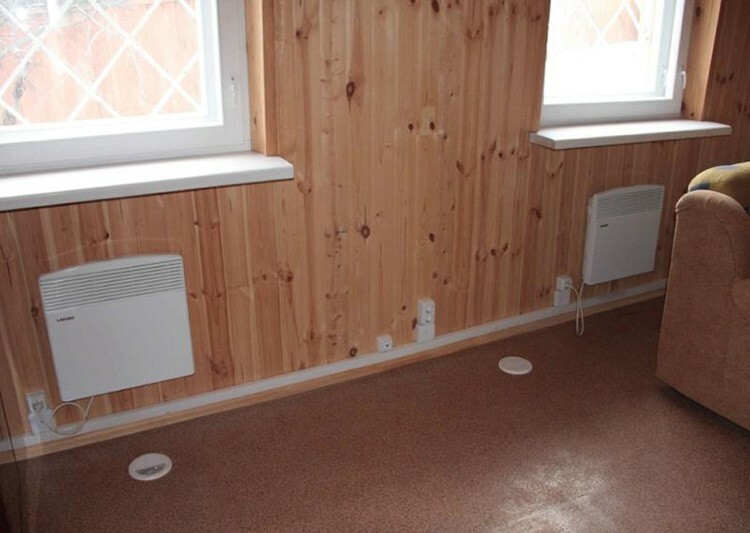
Intermittent heating of the home
In some apartments or houses, heating by utilities is irregular. If you want to fully heat the room and maintain a pleasant microclimate, then installing an electric convector will be a good solution.
Regular use
This method is rarely used. It requires an electronic programmable remote control. Otherwise, electricity costs will cost a pretty penny.
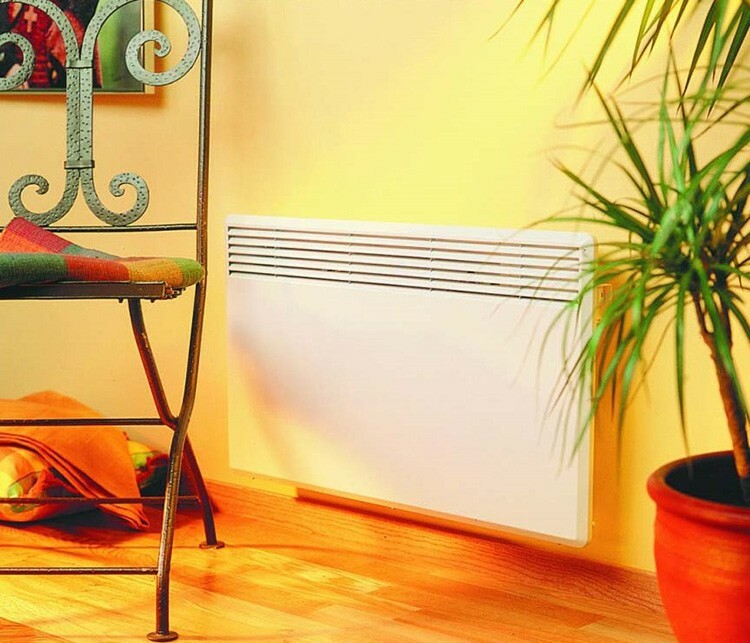
Installation and safety features when using electric wall convectors
To install a wall-mounted product, you first need to choose a location. The optimal solution would be installation under the window - convection will prevent the formation of drafts and will prevent the glass from fogging.
Having chosen a place, you need to outline four points, observing the following requirements: we retreat at least eight centimeters from the floor, twelve centimeters from the windowsill and five centimeters from the wall itself. Having marked the marks, we take a drill or puncher and make holes in the wall. We take out the bracket supplied in the kit and fix it with fasteners. We carefully install the device on the bracket, connect it to the socket and start using it.
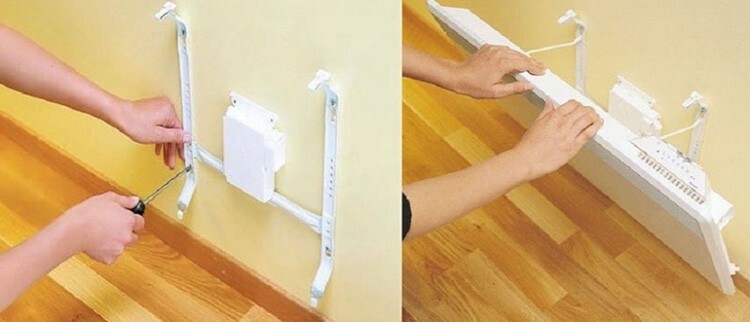
To avoid fire hazardous situations, you need to follow a number of simple rules:
- Do not install the convector in a room with high humidity without a special level of protection (indicated on the packaging and the case of the device).
- Do not cover the equipment with cloth or similar materials while it is in operation. This rule applies to all such techniques.
- The distance between the device and the outlet must be at least eighty centimeters. Otherwise, the risk of fire increases several times.
What are the advantages and disadvantages of wall-mounted electric heating convectors with a thermostat?
Before proceeding to the choice of the best models, you need to arrange all the available information "on the shelves", comparing the positive and negative sides of the choice.
| "Per" | "Against" |
| High level of efficiency. | Significant power consumption. |
| Compact dimensions. | Low efficiency at large volumes of work. |
| Minimal negative impact on the environment. | The convection method is capable of transferring fine dust particles. |
| Safety and ease of use. | Uneven heating of air in the upper and lower parts of the room. |
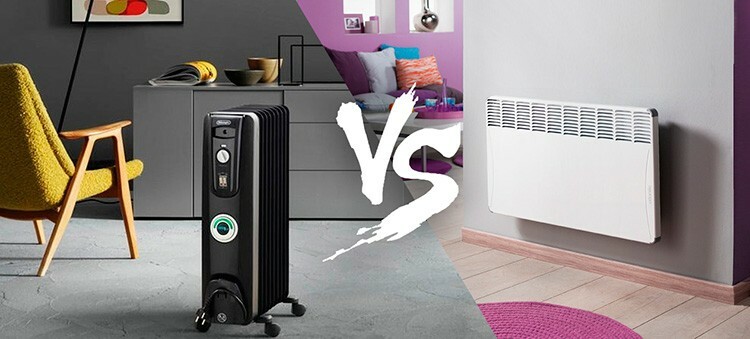
NOTE!
It is worth noting the fact that by 2019 the prices for electric convectors with a thermostat have significantly decreased. Thanks to this, you can find a convenient offer for almost every taste and wallet. But the same moment is also a minus - by inattentively approaching the analysis of proposals, you can buy a low-quality product that will quickly fail.
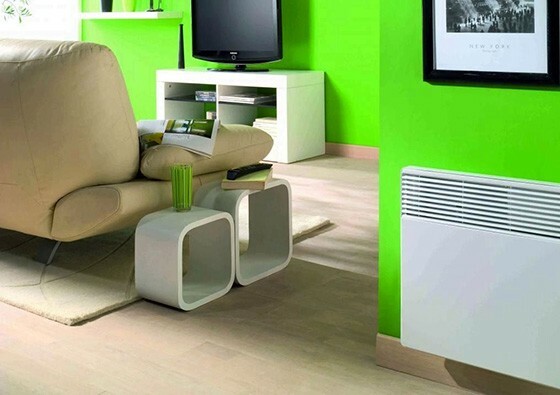
The best manufacturers of electric convectors
Mostly specialized companies are engaged in the manufacture of such equipment. And this is not surprising - specific components, high responsibility for safety and quality - all this imposes great restrictions. We present to you the companies that have proven themselves from the best side. By choosing their products, you increase your chances of purchasing an effective and effective piece of furniture. However, be careful and careful, because sometimes the price of a wall-mounted electric convector with thermostat may be too high - this should not be a reason to reject this category heaters.
| Company name | Dignity |
| Electrolux | A reliable brand, a wide range of products. |
| Nobo | High build quality, mid-range and premium models. |
| Ballu | Affordable prices, interesting design solutions. |
| Noirot | Luxe class products, practically the Apple of the convector world. |
| Timberk | Excellent indicators of equipment reliability, good assembly. |
| Buderus | Reliable brand, convenient equipment. |
| Scoole | Affordable prices. |
USEFUL ADVICE!
Be aware that some manufacturers add wheels to their models in addition to the standard brackets. This allows the product to be used in two versions.

Bonus! Which electric wall-mounted heating convector with thermostat is better to buy in 2019? TOP-5 + reviews
Sometimes, even with a great store of knowledge, it is difficult to firmly make the right decision. Edited by Tehno. Guru understands this very well. Therefore, today we are giving away our personal top of the best devices for 2019. Let our opinion be a beacon in the ocean of offers and advertisements.
| No. in the rating | Firm | Model | Average price in RF, rubles | Appearance | Editorial rating Tehno.guru, score |
| 1. | Noirot | Spot E-3 2000 | 8 290 | 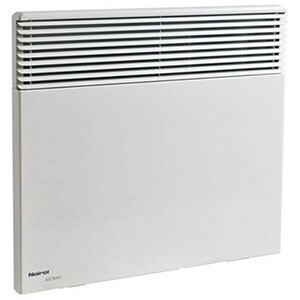 | 9,9/10 |
| 2. | Nobo | C4F 20 XCS | 11 400 | 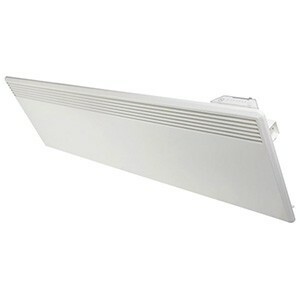 | 9,8/10 |
| 3. | Timberk | TEC.PF1 M 2000 IN | 4 000 | 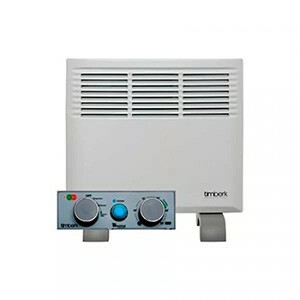 | 9,5/10 |
| 4. | Ballu | BEP / EXT-2000 | 5 900 | 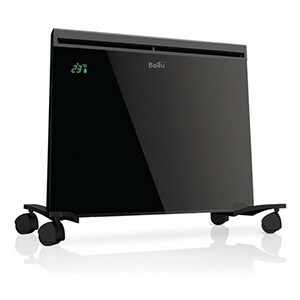 | 9,6/10 |
| 5. | Electrolux | ECH / AG-2000MF | 4 900 | 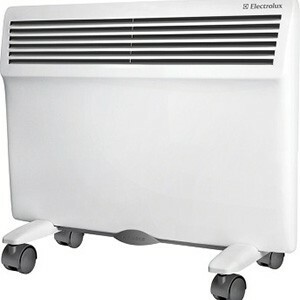 | 9,4/10 |
Satisfied buyers also agree with the editorial view. Here are reviews of some of the presented electric wall-mounted heating convectors with a thermostat:
ara1, Russia, Smolensk:Timberk TEC.PF1 M 2000 IN.
“Advantages: warmth, comfort, efficiency.
Disadvantages: not found.
This convector is designed to heat a room with an area of 20 sq. m. We have a room of 18 sq. m. It heats up in a couple of minutes, and heats up the whole room very quickly too!
By adjusting the temperature, you can achieve both a high temperature in the room and an average, comfortable one.
The Timberk convector does not "eat" a lot of electricity, it comes out very economically, so you can leave it switched on in the economy mode overnight.
The convector has a drop sensor and is protected from overheating.
We are very pleased with the convector, it looks very stylish and really helps a lot to keep the house in a good mood and coziness! ".
Read more on otzovik: http://otzovik.com/review_1440497.html.
sinoxana, Russia, Yakutsk:Ballu BEP / EXT-2000.
“Advantages: safe for children.
Disadvantages: no humidifier.
We looked through a lot of options and, finally, settled on a Balu convector with an electronic thermostat, which maintains the set temperature in the room with maximum accuracy, completely eliminating drops temperature. The electronic thermostat ensures uninterrupted operation of the electric heater for a long time. Using the display, you can set the required temperature, heating time, you can also adjust the temperature using the remote control.
The Balu Plaza convector combines the latest advances in electric heating with the latest design trends. The front panel is high-strength black glass and the body is made of matte black metal. It is somewhat reminiscent of a plasma TV. There is one more thing: it can be mounted on the wall in a place convenient for you. It fits very well into any interior.
The only drawback is that there is no humidifier.
Very well suited for those who have small children in the house. "
Read more on otzovik: http://otzovik.com/review_127467.html.



